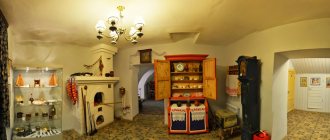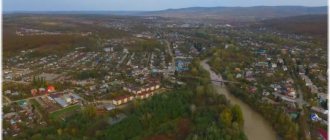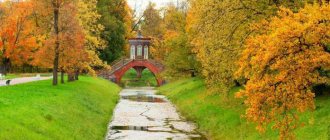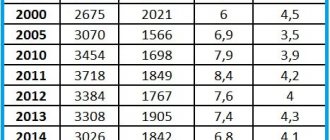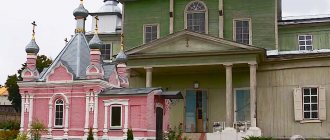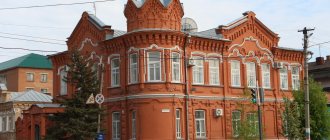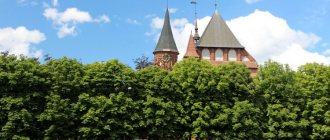Society
07:00, 02/26/2018 48 Subject: Districts of the Republic of Tatarstan
Notes from scientists in the margins about the Arsky region of Tatarstan. Part 1
Employees of the Institute of Tatar Encyclopedia and Regional Studies (ITER) of the Academy of Sciences of the Republic of Tatarstan Larisa Ainutdinova and Bulat Khamidullin continue to introduce our readers to Tatarstan. In today's column, written specifically for Realnoe Vremya, scientists talk about the area associated with such names as Fyodor Chaliapin, Gabdulla Tukay, Shigabutdin Mardzhani and others. The Arsky region is so interesting, and there is so much information, that our columnists wrote their notes in two parts.
As is known, after the capture of Kazan by Ivan the Terrible in October 1552 and the Kazan War of 1552-1556, the largest and most passionate part of the Kazan Tatars lived in the villages of Zakazania - the “heart” of the former Arsk daruga of the Kazan Khanate. First of all, it was here, on the territory of the modern Arsky district of the Republic of Tatarstan, as well as partly the Atninsky and Vysokogorsky districts of Tatarstan, that the basic, classical forms and traditions of the ethnography of the Kazan Tatars, their urban culture and life, education and art, crafts and trade were preserved.
All this led in the 17th-19th centuries to the formation here of one of several centers of progressive development of the Tatars of the Volga region and the Urals (primarily the Kazan Tatars, as well as migrant Tatar-Mishars), which found vivid embodiment in the phenomenon of the “industrial village”, in the outstanding architecture of the local rural buildings, in outstanding scientific and artistic works of representatives of the local population. And for the region itself, it was not without reason that the popular nickname “Ak Yak”, that is, “The Light/White/Noble Side”, as well as the poetic and historical-ethnographic “Kazan arty” (“Order”) was assigned for a long time.
Tugan җiremә
Airylyp kitsәm dә sinnәn gomremneң tanynda min, And Kazan arts! Sina kaittym soep tagyn da min.
Ul tanysh kyrlar, bolynnar tartty әүвәл hissemi; Tarta trader, kuimady, kaytardy ahyr җismemi.
Kyssa da sindә fәkyyrleklәr, yatimleklәr mine, Izsә dә үз ishlәremnәn khur kimleklәr mine,—
Utte inde st zamannar, ochtylar shul kosh kebi; Uylasam, street konnәrem tik kichtә kүrgan tosh kebi;
Barsә dә dulkynnaryn, һich almada, gark itmәde; Aldy durt yagymny yalkyn, yakmady, khark itmade.
Bu sabәptan anladym min, and tugan hirem, sinen Җanga yagymly ikander yalkynyn da dulkynyn!
Җөмләтән зге ікан ьч: ineshen, chishman, kyryn, Yullaryn, avyl, әven, kibannәren dә yndyryn;
Һәр fosuly әrbәgan: language, kozen, җәy, kysh kөnon; Barcha, barcha ak oek, kinder, chabata, yshtyryn!
Һәм көтүchen, etlәren, үгез, сыер, сарыкларян; Barchasy yakhshy: bure, җen, shүrәle, sarikylaryn.
Gabdulla Tukay
Name
The name Arska (Tat. Archa) goes back to the common Turkic appellative art
“back, rear;
rear, rear”, since the Arsk fortress has long been the northern rear outpost of the Kazan Khanate, and the region itself in which Arsk is located, the Tatars still call Kazan arts
“Order”, lit. “the rear of Kazan.”[2]
Contrary to the statements of some Udmurt scientists, the name of the city is not directly related to the Volga-Turkic (Tatar, Chuvash and Bashkir) name of the Udmurts - ar
.[2]
Bulgarian fortress Archa
Arsk as a Bulgar fortress in the zone of active contacts of Turkic and Finno-Ugric tribes was founded presumably in the 12th-13th centuries, evidence of which is the archaeological monument located in the center of the modern city - the Arskoe settlement, as well as Bulgar and Golden Horde objects found on its territory (including including ceramics and coins). The first mention of Arsk as a city is associated with the description in Russian chronicles (for example, in Nikonovskaya, Typografskaya, Lvovskaya, Sofia 2nd, etc.) of the seizure of the Kazan throne by the Siberian Khan Mamuk in 1496-1497. And the first written mention of the “Arsk land” dates back to 1379 (for example, in the Trinity, Nikonov, Simeonov, Typographic and other chronicles). A much earlier mention of Arsk, dated 1278, contained in the “Life of Yaroslavl Prince Theodore Rostislavovich Chermny”, is recognized by scientists as unreliable.
Z.G. Shakirov at the Arsky settlement. 2006
The Arsk daruga (Arsk land, Arsk side, Arsk quarter), along with the Alat, Galician, Zureisk and Nogai darugs, Bashkir, Belovolzhskaya, Votyakskaya, Kama, Kostyatskaya and Tsiplinskaya lands, was one of the densely populated administrative and political destinies of the Kazan Khanate with a mixed ethnic composition. Its center, the city of Arsk, is repeatedly mentioned in many written and folklore sources in connection with political events on the territory of the said Tatar state and the neighboring Vyatka and Perm lands.
Currently, there is a theory of the Udmurt origin of the city of Arsk: it was allegedly founded in the X-XI centuries (the Arabs at that time mentioned “Arsa” / “Arta” - the main city of the country “Arsania” / “Artania”), supposedly existed as a center an independent South Udmurt principality in the 12th-15th centuries and an appanage Udmurt principality as part of the Kazan Khanate in the 15th-16th centuries. A serious basis for this opinion is Udmurt folklore, in particular, the information that “an Udmurt king (eksey) sat in Arsk,” and the presence of the “ar” component in the spelling of the city’s name, which is clearly interpreted by some researchers as an indication of the Udmurts. However, this theory has been questioned more than once (see, for example: Smirnov I.N. “Votyaki”, 1890) and has been seriously criticized more than once, and primarily by Izhevsk researchers (see, for example, scientific articles by Sergei Konstantinovich Belykh) .
There is also extensive historical literature considering the emergence of the city of Arsk in the 11th-12th centuries as a result of the “Bulgaro-Chuvash” settlement of the Kazanka, Vyatka and Cheptsy river basin. In this concept, Arsk is considered to be originally a Chuvash city, the population of which was later assimilated by the Tatars. In the hypotheses substantiating the “Bulgaro-Tatar” origin of Arsk, the emergence of the city is seen as the result of the process of political and economic consolidation of the territory of the future Arsk land within the framework of Volga Bulgaria in the 11th - first half of the 13th century, or as a result of the desire of the Golden Horde Tatars to “retain this country for themselves” "(Vtorov N.I. "Ancient monuments in the Kazan province", 1840), and the subsequent development of the city is inextricably linked with the ethnopolitical history of the Tatars of the Volga-Vyatka region.
As Kazan archaeologists Fayaz Khuzin, Airat Sitdikov and Zufar Shakirov correctly wrote in 2010, “the solution to pressing problems of the early history of Arsk is possible only with a comprehensive consideration of all available sources and analysis of the results of scientific research.” At the same time, they competently emphasized that “the historical and cultural heritage of Arsk and its surroundings is the heritage of all the peoples living here, created by the efforts of many generations of their ancestors and requiring painstaking study and careful preservation” (“On the Early History of Arsk,” 2010). In this regard, I would like to especially note that, in our opinion, representatives of some South Udmurt and Mari meadow clans also lived in the Arsk Daruga of the Kazan Khanate. After all, for example, the Russian prince Andrei Kurbsky (participant in the capture of Kazan in October 1552) clearly indicated that “except for the Tatar language [i.e. people] in that Kazan kingdom there are five different languages [i.e. peoples]: Mordovian, Chuvash, Cheremisky, Voitetsky or Arski, fifth Bashkir.”
Arskoye settlement. View from the left bank of the Kazanka. 2010 Photo by Z.G. Shakirova
The famous “Aryan princes” - the rulers of the Arsk Daruga, semi-independent of the Kazan Khan, discussed in detail in the works of Damir Iskhakov, most likely were multi-ethnic and multi-confessional and included both the Turkic and Finno-Ugric clan elite, which is clearly seen in their names mentioned in written and folklore sources. Although, for example, in the Kazanka River basin along its entire length, in Arsk and its outskirts, archaeological finds of elements of the Volga-Finnish material culture are minimal.
...In the system of Bulgar settlements on the Kazanka River, Arsk occupied a special position, being the extreme northern Bulgar fortified settlement upstream. Near it, 3 km to the west, downstream is the Buzhinskoye settlement, which probably formed the Arsk district. During the period of the Kazan Khanate, Arsk, as we wrote above, was the center of the Arsk Daruga (Arsk Land), beautifully described by A.M. Kurbsky: “...in that land there were already great fields, very abundant and abundant in all kinds of fruits; in the same way, the courtyards of their princes and nobles are extremely beautiful and truly worthy of surprise, and the villages are frequent; There are so many kinds of bread there; truly faith is not like confession: like the likeness of many heavenly stars; in the same way there are countless numbers of livestock from various herds, and precious gains, especially from various animals that live in that land; for there dear coons will be born, and squirrels and other animals will be needed for clothing and food; And then there are a lot of sables, and also honey: we don’t know where there would be more under the sun...”
In the Russian chronicle “The History of the Kazan Kingdom,” written in the middle of the 16th century, a description of the city of Arsk itself was preserved: “That old fort, Aresk by the call, was built like a solid city, with towers and loopholes, and many people live in in it, and they are wandering velmi, and there is no charge from any army, but it is 60 versts from Kazan, in very strong places and in impenetrable places, in the wilds and in the blats, and there is only one way to come to it and leave.” In September 1552, Arsk was burned by the troops of Ivan IV, which, as we know, was a turning point in the siege of Kazan, predetermining the final capture of the capital of the Kazan Khanate by the Russian army on October 2, 1552. A few weeks later, an uprising for liberation began in the Middle Volga region, and one of its centers was the Arsk land, where the rebel detachments consisted mainly of Tatars, Udmurts and Mari...
In 1781-1796, Arsk had the status of a district city of the Kazan governorate, and from 1796 - a provincial city of the Kazan district. In the 18th - early 19th centuries it was a place of settlement for arable soldiers. The main occupations of the residents during this period were blacksmithing, flour milling, carpentry, brickmaking, wool-making, tailoring, farming and cattle breeding. At the beginning of the 20th century, a volost government was located in Arsk, the Epiphany and Intercession churches, a two-class parish school, a postal and telegraph office, a telephone exchange, a zemstvo hospital (transferred from the village of Chepchugi in 1872), a zemstvo women's school, a men's two-class vocational school, almshouse, 6 malt houses, 2 tanneries, 1 vodka factory, 3 forges, a mill, a state winery and 10 small shops, 2 beer houses, 2 taverns, 10 taverns, 3 inns, a market on Mondays.
Epiphany Church building
From 1930 to 1993, the production association “National Footwear” functioned in Arsk (by the way, the “Trud” artel for sewing Tatar national footwear functioned in 1941-1972 in the village of Klachi, and its products were exported to Italy, France, etc. .d.); in 1937-1955 - a machine and tractor station; in 1941-1946 - an evacuation hospital, in 1943 reorganized to treat prisoners of war; in 1941, a fruit and berry nursery was opened, which was later transformed into a state farm, a collective enterprise, an LLC, an agricultural production complex, etc.
Nowadays, in the city with a population of about 20 thousand people, light and food industry enterprises, agricultural products processing enterprises, a mechanical repair plant, a timber processing plant, a building materials plant, an elevator, etc. operate.
In 1920, pedagogical classes with a 2-3-month training period were opened in Arsk, and in 1930, the Arsk Agricultural Pedagogical College was founded on their basis (in the same year, the technical school was named after the 10th anniversary of the TASSR). In 1937, it was renamed into a pedagogical school for the training of primary school teachers (in 1946 it was named after G. Tukay), in 1992 - into the Arsky Pedagogical College named after. G. Tukay. Among its graduates are many figures of national culture: G.A. Akhunov, M.S. Magdeev, F.M. Minnulin, I.K. Khairullin, S.F. Shakir and others. In 1999, the Alifba Museum was opened at the college, the exhibition of which is dedicated to the emergence and development of the written language of the peoples of the world from ancient times to the present day (1226 storage units). The museum is based on the pedagogical and creative activities of college teachers S.G. Vagizova and R.G. Valitova - authors of the textbook "Alifba", the first edition of which was published in 1965.
Currently, in the field of education in Arsk there are 4 secondary schools, 1 gymnasium, 1 elementary school, 1 elementary school - kindergarten, 8 kindergartens, a palace for schoolchildren, a children's art school, a children's and youth sports school "Archa", a children's youth sports school school "Archa Arena", rehabilitation center for children and adolescents with disabilities "Source of Hope", vocational school No. 120, Arsky Socio-Legal College, a branch of the Academy of Social Education (KSUI), there are 3 libraries, 2 houses of culture, 2 mosques.
The Arsky Museum of Literature and Art was opened in 1995.
In 1995, the Arsky Museum of Literature and Art was opened: the exhibition area is 144 square meters. m, the collection includes about 2 thousand storage units. The exhibition presents materials about 40 writers and 20 figures of art and science, whose destinies are connected with the Arsk region (among the exhibits are documents and personal belongings of the enlighteners Sh. Kultyasi, G. Kursavi, Sh. Marjani, playwright G. Kamal and poet G. Tukay), about the Civil and Great Patriotic Wars. A separate exhibition is dedicated to products of applied and fine arts, natives of the region, and the history of the region. In 2009, the Arsky Historical and Ethnographic Museum “Kazan Arts” was opened. The exhibition is dedicated to the history, culture and traditions of the Tatar people living in Zakazanye (13,615 storage units).
In 2005, in honor of the 60th anniversary of Victory in the Great Patriotic War, the Glory memorial complex was opened on the central square of Arsk.
The city has preserved monuments of historical and cultural heritage: the city administration building (1853), the Kapralov house (second half of the 19th - early 20th centuries; a monument of residential architecture in the eclectic style of the “brick” style with elements of classicism), a residential building of the late 19th century, shopping rows of the merchant S. Khairullin (late 19th century), the house of the merchant Syzganov (1890), the building of the railway station (1914), the building of the Starch Factory (1929), the building of the industrial artel "Trud" for the production of national shoes (1929-1930 ), House of Soviets (1930).
Kai taraftan kilsan dә, Kolacyn st kin acha. Izgelektә bulsa niyat, Kunakchyl bezneң Archa.
Tau өstendә balky Archa, Tuban җәairi Kazansu. Su buylaryn ber inlә, Bulsa kүңeleң yamansu.
Mәgyrifәt nury bireә, Iҗat ruhi mәңgelek. Dan җyrly Kazan artyna Boek Tukai in elek.
Saklap kilden shaһrilegen Kүpme gasyrlar asha. Yaza yana sahifalyar Chal tarikhly yash Archa.
Damir Nuriakhmatov, “Beznen Archa”.
The name of the opera singer Fyodor Ivanovich Chaliapin (1873-1938), who in 1885-1886 studied at the Arsk men's two-year vocational school, is associated with Arsk. Photo wikipedia.org
Among the famous natives of Arsk is Hero of the Soviet Union V.F. Yezhkov (1922-1943); Honored Worker of Culture of the RSFSR, laureate of the K. Nasyri A.G. Prize Yakhin (1931-2010); Doctor of Physical and Mathematical Sciences N.S. Baryshev (1936-2000); radio engineer, laureate of the USSR State Prize E.K. Abulkhanov (1937-2005); cartoonist E.N. Dyshaev (1938—2017); Doctor of Sociological Sciences G.G. Tatarova (b. 1944); Honored Economist of the Russian Federation and the Republic of Tatarstan, Minister of Economy and Industry of the Republic of Tatarstan in 2005-2007 B.P. Pavlov (b. 1949); composer R.Sh. Mukhutdinova (b. 1957); Minister of Transport and Road Facilities of the Republic of Tatarstan L.R. Safin (b. 1969), singer, laureate of the international prize “Altyn Bars” L.V. Khamitova (b. 1970), Deputy Head of the Department of External Relations of the President of the Republic of Tatarstan M.I. Gatin (b. 1976), Deputy Administrator of the President of the Republic of Tatarstan R.N. Sabirov (b. 1981).
By the way, the name of the opera singer Fyodor Ivanovich Chaliapin (1873-1938), who in 1885-1886 studied at the Arsk men's two-year vocational school, is associated with Arsk.
Khan's villages of Arsk land
As we noted above, many settlements of the Arsky region are known from written sources at least from the time of the Kazan Khanate. In this list we can accurately indicate the villages of Abzyabar (Abҗabar; after desolation in the middle of the 16th century, it was revived at the end of the 16th century as a Russian village; now there is no permanent population), Alga-Kuyuk (Alga Koek), Arnyash (Әrnәsh; in 2015 year, one official resident was recorded here), Bolshie Verezi (Zur Birazi), Vasilyeva Buzha (Yugary Bukha; now there are equal numbers here - 50% each - Russians and Tatars), Veneta (now there are 76% Russians here), Verkhniye Aty (Yugary Aty) , Upper Meteski (Yugary Mәtәskә), Upper Azyak (Yugary Әzәk), Verkhnyaya Korsa (Yugary Kursa), Guburchak (Goberchәk), Ermolovka (formerly “Malaya Nurma”, then “Strakhovka”; now 100% Russian village) . Kyshkar), Murali (Mөrәle), Nalasa, Lower Meteski (Tүbәn Mәtәskә), Lower Ura (Tүban Ory), Middle Aty (Urta Aty), Old Masra (Iske Masra), Old Churilino (Iske Churile; now there are 69% Tatars, 28% Russians), Old Kishit (Iske Kishet), Shtyr (Shterә; in pre-revolutionary sources it is also mentioned under the names “Ishtera”, “Shchira Tatarskaya”, “Village Along the Ishcherka River”) and Yanga-Sala ( Yanasala).
We also note the presence in the area of a large number of archaeological monuments, which allow us to assume a more ancient history of many settlements in the Arsky region - at least from the period of the Volga-Kama Bulgaria, from the 12th-13th centuries (there are no Bulgarian monuments of the 10th-11th centuries in Zakazanye today revealed).
It is also necessary to point out that a certain number of Tatar villages clearly perished in the harsh years of 1552-1556: for example, near the village of Stary Yavash (Iske Iyabash) there is an old cemetery, clearly dated by the gravestones to the period no later than the Kazan Khanate. Judging by the historical legends of the local population, in the times of the khan, it was in those parts that there was a huge village with as many as five mosques.
Many settlements of the Arsky region are known from written sources at least from the time of the Kazan Khanate. In the photo - the village of Koshlauch
In much later times (including Soviet times), the region lost a whole “necklace” of villages and hamlets - these are Aleksandrovka, Artel Brek, Bekrenev Khutor, Voznesensky Pochinok, Gremyachka, Grukino, Zemlyorob, Kzyl Saray, Krasnoe Pole, Kulbash, Malaya Serda , Maloe Kodryakovo, Nizhny Azyak, Nikolskaya Buzha, Nikolskaya Sloboda, Novaya Atnya, Pashkovo, Pokrovka, Rozhdestvensky, Romanova Khutor, Stalin, Tolchishma, Khvostova Buzha, Shelengur, Yanali Pochinok and, apparently, many others.
By the way, the youngest village in the region today is the village of Naratlyk, located in the Shoshma River basin, 36 km north of Arsk. It was registered as a settlement on November 14, 1996 and is now part of the Tashkichinsky rural settlement. The number of inhabitants in 2015 was 97 people, Tatars.
Homeland of Gabdulla Tukay. “Wonderful land!”
Several settlements in the Arsky region are directly associated with the name of the great Tatar poet Gabdulla Tukay (1886-1913).
“My village stands on a steep hill. A spring with cold water is just a stone’s throw from us. Everything around me is joyful, I know the taste of water. I love everything in my land with body and soul...”
From the poem “Native Village” by G. Tukay (1909). Translation by V. Tushnova
Gabdullazyan Tukaev was born in the village of Koshlauch (Kushlavych) on April 14 in the family of the designated mullah Muhammadgarif (1842, Koshlauch - 1886, Koshlauch; buried in the local rural cemetery) and his wife Bibimamduda (1864, Uchile - 1890, Pochinok Sosna).
The village is located on the banks of the Krasnaya River, 24 km northwest of Arsk, known since the period of the Kazan Khanate. In the 18th - first half of the 19th centuries, its inhabitants belonged to the category of state peasants and were engaged in agriculture, cattle breeding and beekeeping. At the beginning of the 20th century, the village had a mosque, a madrasah, a windmill, a forge, 2 inns, and 2 small shops. Until 1920, the village was part of the Bolshe-Mengerskaya volost of the Kazan district of the Kazan province. Since 1920, as part of the Arsky canton of the TASSR. Since 1930 in Tukaevsky, since 1938 in Atninsky, since 1959 again in Tukaevsky, since 1963 in the Arsky district. Nowadays it is part of the Utar-Atyn rural settlement. In 1930, a collective farm named after was organized in the village. Tukay, in 1985 he became part of the united collective farm "Chulpan", in 1990 again as part of the collective farm named after. Tukaya. Since 2015 - Tukai LLC.
Little Tukay (Orphan). Hood. Kh. Kazakov. 1958
Residents (about 130 people) are engaged in field farming and meat and dairy cattle breeding. The village has a rural club, a library, a kindergarten, and a first aid station. In 1976, on the occasion of the 90th anniversary of the birth of G. Tukay, the Tukaev family House-Museum was opened in the village, in 1996 the Tukaev estate was restored (includes a mullah’s house, a house in which the typical interior of a rural dwelling, a barn-cage, bath). The main exhibition of the house-museum is located in the mullah’s house and consists of three sections: “In the madrasah”, “The life and work of Tukay”, “Koshlauch - the birthplace of Tukay”. The exhibition area is 120 sq. meters, the funds number 610 storage units. Among the especially valuable exhibits are the personal belongings of the poet’s mother. In 1955, a bust of G. Tukay (sculptor I.A. Novoselov) was installed on the territory of the museum.
When Gabdulla was about five months old, he lost his father. Soon his mother died, and at the age of four Gabdulla became an orphan. In 1890, he ended up in the family of his grandfather (mother’s father) Zinatulla Zainelbashirov (1829-1909), the imam-khatib of the village mosque. Taught (Ochile). The second time G. Tukay lived in the village during a period of illness from the end of December 1911 to February 1912 in the house of his uncle.
This village is located on the banks of the Verezinka River, 13 km north of Arsk. It was founded at the end of the 17th century and is often mentioned in pre-revolutionary sources under the names “Syulya” and “Malye Verezi”. In the 18th - first half of the 19th centuries, its inhabitants belonged to the category of state peasants, whose main occupations were agriculture and cattle breeding, as well as handicrafts. At the beginning of the 20th century, the village had a mosque (a monument of religious architecture - an example of Tatar wooden architecture of the late 19th century), a mekteb, a water mill, and a small shop. Until 1920, the village was part of the Novo-Kishitsky volost of the Kazan district of the Kazan province. Since 1920, as part of the Arsky canton of the TASSR. Since 1930 in the Arsky region. Nowadays it is part of the Novokyrlaysky rural settlement. Nowadays there is a junior high school, a kindergarten, and a mosque in the village. The residents—more than 250 of them—work at the Chishma agricultural production complex and are engaged in pig farming. There are three springs in the village.
In 1892-1894, little G. Tukai was brought up in the house of the peasant Sagdetdin Salikhov (1837-1904) in the village of New Kyrlay (Yana Kyrlay). This village is located in the upper reaches of the Iya River, 22 km north of Arsk. It was founded at the end of the 17th century, and in pre-revolutionary sources it is also mentioned under the names “Newly Settled Gar” and “Maly Krylay”. In the 18th - first half of the 19th centuries, its inhabitants belonged to the category of state peasants, whose main occupations were agriculture and cattle breeding, as well as shoe making.
In 1971, the State Literary and Memorial Museum Complex of Gabdulla Tukay was opened in the village.
In 1811, a mosque was built here, and a mekteb functioned with it, where G. Tukay studied. At the beginning of the 20th century, the village had a mosque (a monument of religious architecture in the traditions of Tatar folk architecture; currently operational), a madrasah, a windmill, and 2 small shops. Until 1920, the village was part of the Novo-Kishitsky volost of the Kazan district of the Kazan province. Since 1920, as part of the Arsky canton of the TASSR. Since 1930 in Arsky, since 1935 - in Kzyl-Yulsky, since 1956 - in Tukaevsky, since 1963 - in Arsky district. Now the center of the Novokyrlai rural settlement. In 1930, the Tukai-Kyrlay collective farm was organized in the village; now Agro LLC and Kyrlaykhleb LLC operate, where local residents, about 520 people, work. The village has a secondary school, a kindergarten, a community center, a library, a first aid station, a hotel complex, and a mosque. In 1955, a bust of G. Tukay (sculptor I.A. Novoselov) was erected in the village opposite the school, and in 1971 the State Literary and Memorial Museum Complex of Gabdulla Tukay was opened. In 1976, a monument to G. Tukay was unveiled on the territory of the complex, and wooden sculptures of fairy-tale characters based on the works of the poet (author B. Urmanche) were installed. The museum complex of Gabdulla Tukay itself is located within an area of 11.9 hectares of taiga forest - a natural monument of regional significance “Tukay-Kyrlay Forest”.
* * *
“I saddled my horse and rode to Zakazanye. The land is blooming and dear, I will not part with you!”
- this is how it is sung in one folk song about “Kazan arts” - Order. We are also in no hurry to part with the Arsky district, because we have not yet talked about many, many famous people, famous villages, interesting sights of this marvelous region, the modern development of the Arsky district, its amazingly beautiful nature, etc. — we hope to write all this for the readers of Realnoe Vremya (and we will attach other photographs) in the very near future...
To be continued
1/111
- Arskoye settlement. View from the left bank of the Kazanka. 2010 Photo by Z.G. Shakirov
- Arsk
- Arsk
- Arsk
- Arsk
- Arsk
- Arsk
- Arsk
- Arsk
- Arsk
- Arsk
- Arsk
- Arsk
- Arsk
- Arsk
- Arsk
- Arsk
- Arsk
- Arsk
- Arsk
- Arsk
- Arsk
- Arsk
- Arsk
- Arsk
- Guburchak
- Guburchak
- Coraiwan
- Coraiwan
- Coraiwan
- Koshlouch
- Koshlouch
- Koshlouch
- Koshlouch
- Koshlouch
- Kshkar
- Kshkar
- New Serda
- New Kyrlay
- New Kyrlay
- New Kyrlay
- New Kyrlay
- New Kyrlay
- New Kyrlay
- New Kyrlay
- New Kyrlay
- New Kyrlay
- New Kyrlay
- New Kyrlay
- New Kyrlay
- New Kyrlay
- New Kyrlay
- New Kyrlay
- Near the village of Naratlyk
- Near the village of Naratlyk
- Near the village of Naratlyk
- Kismes River
- Saray Chekurche
- Simetbash
- Medium Corsa
- Old Kyrlay
- Tashkich
- Tashkich
- Tyubyak-Chekurcha
- Tyubyak-Chekurcha
- Tyubyak-Chekurcha
- Urnashbash
- Urnashbash
- Urnashbash
- Urnyak
- Urnyak
- Urnyak
- Urnyak
- Utar Aty
- Utar Aty
- Utar Aty
- Duck
- Taught
- Taught
- Taught
- Taught
- Taught
- Hasanshaikh
- Hasanshaikh
- Hasanshaikh
- Hasanshaikh
- Hasanshaikh
- Hasanshaikh
- Hasanshaikh
- Hotnya
- Hotnya
- Hotnya
- Hotnya
- Hotnya
- Hotnya
- Hotnya
- Hotnya
- Hotnya
- Hotnya
- Hotnya
- Hotnya
- Hotnya
- Chicanas
- Chuma-Elga
- Chuma-Elga
- Chuma-Elga
- Shura
- Shushmabash
- Shushmabash
- Shushmabash
- Yugari Aty
Larisa Ainutdinova, Bulat Khamidullin, photo by the authors and A.I. Nogmanova
Reference
Larisa Makhmutovna Ainutdinova - historian
- Candidate of Historical Sciences, Associate Professor, Head of the Center for Regional Studies and Sociocultural Studies of the Institute of Tatar Encyclopedia and Regional Studies of the Academy of Sciences of the Republic of Tatarstan.
- Research interests: history of Tatarstan in the 19th-21st centuries, regional studies, encyclopedic studies, scientific studies.
- Author of more than 100 scientific publications, including monographs “Liberal movement in the Kazan province: 1900-1917.” and “Kazan Scientific Press”, a textbook “Socio-political movement in Russia in the second half of the 19th - early 20th centuries”, a reference book “Scientists of Tatarstan - Doctors of Science”, more than 600 articles in the six-volume “Tatar Encyclopedia”.
Bulat Lironovich Khamidullin - historian, writer
- Member of the board of the Union of Writers of the Republic of Tatarstan, Candidate of Historical Sciences, head of the Center for the Study of the Tatar Diaspora of the Institute of Tatar Encyclopedia and Regional Studies of the Academy of Sciences of the Republic of Tatarstan, producing editor of the magazine “Volga Region Archeology”.
- Author of the idea for the illustrated book series “History of the Tatars” and “History of the Tatars in Persons”, books “From the Depth of Centuries”, “Peoples of the Kazan Khanate”, “Khazars and Their Vassals through the Eyes of Contemporaries”, etc.
- Author of more than 200 journalistic and scientific articles, including for the Great Russian Encyclopedia.
- Laureate of the International Prize named after. Kul Gali, Honored Worker of Culture of the Republic of Tatarstan, laureate of the State Prize of the Republic of Tatarstan in the field of science and technology.
The work of scientists is carried out within the framework of three main projects: “Tatar Online Encyclopedia”, “Settlements of the Republic of Tatarstan” and “Regions of compact residence of Tatars in the Russian Federation”.
SocietyHistoryCultureInfrastructure Tatarstan
How to get to Arsk
It is impossible to get to Arsk directly from Moscow. We will have to change different types of transport. The fastest way is first by plane to Kazan, then by choice of bus, taxi, or train. You can easily fly to the capital of Tatarstan from Sheremetyevo or Domodedovo, flights are daily. The journey by air will take one and a half hours. Upon arrival, you can immediately hire a taxi, but the price tag at the airport walls is several times higher than if you go from the city. A cheaper way is buses. They go every hour. An even cheaper way is by train: two hours of steady travel, and you are in Arsk.
Search for flights to Arsk at minimal prices
You can also get there by train, almost directly, at least you only have to change trains from car to car. From Moscow the train leaves from the Kazansky station, changing in the capital of the republic, approximately 17 hours of travel - with a clear connection. Fans of road trips can also go by car. The distance from Moscow to Arsk is about 900 km.
Travelers driving a note: if you take into account 10 liters for every 100 km, then you will need 87 liters of gasoline. 1 liter costs about 45 RUB, that is, the road to Arsk will cost you 4500 RUB. There are plenty of gas stations on the M-7 highway.

